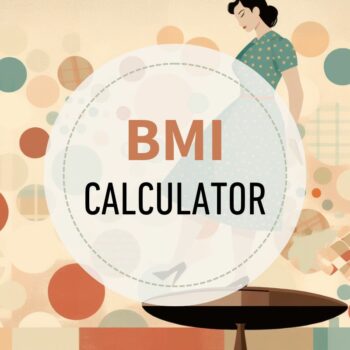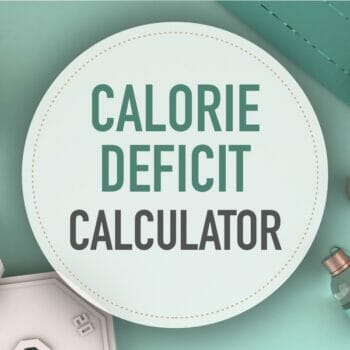BMI Calculator
BMI is a quick, easy, and effective way to stay informed about your health. But it’s only one piece of the puzzle.
Making sense of your BMI result
Every time you calculate your BMI, you get a numerical result. This isn’t a test grade, but it gives you some insight into your health.
Depending on where your result falls, you could be underweight, normal weight, overweight, or obese.
- Underweight can indicate you’re not getting the nutrients your body needs to function optimally. It might be time to revise your eating habits or consult a health professional.
- Normal weight suggests that you’re within a healthy weight range for your height. Maintaining a balanced diet and regular exercise will help you stay here.
- Overweight: This might be your body’s way of saying, “Hey, let’s look at your lifestyle.” It’s worth considering if there are any improvements you can make to your diet and exercise routine.
- Obese: This is a red flag, and taking action is important.
What do the Body Mass Index (BMI) categories mean?
Underweight
A BMI less than 18.5 falls into the underweight category. This could indicate inadequate nutrition, health problems, or high metabolism.
Normal Weight
If your BMI lands between 18.5 and 24.9, you’re in the sweet spot, the normal weight range.
Overweight
A BMI between 25 and 29.9 is considered overweight. This can be a wake-up call for many,
Obese
This category is further divided into three classes.
- Class I is a BMI of 30 to 34.9.
- Class II is 35 to 39.9.
- Class III, or severe obesity, is a BMI of 40 or higher.
Obesity can significantly increase the risk of serious health issues like hypertension, heart disease, and type 2 diabetes.
How to calculate your BMI
The formula to calculate BMI is as straightforward as it comes. It is weight (in kilograms) divided by height (in meters) squared:
BMI = weight(kg) / [height(m)]^2The weight and height must be converted into the correct units (kilograms and meters). For instance, if you’re 5 feet 7 inches tall, that’s approximately 1.70 meters.
BMI is one piece of a puzzle 🧩
BMI can provide valuable information, but it’s not the full story. It’s one piece of the puzzle, but other factors like muscle mass, bone density, and overall physical and mental well-being are not considered.
Always consider your Body Mass Index in conjunction with other health markers.
Using BMI in your weight loss journey 💖
BMI can help with pacing. Rapid weight loss can be as unhealthy as being overweight, leading to muscle loss, nutritional deficiencies, and other health problems.
Your BMI can help ensure you’re losing weight at a healthy pace. If your BMI drops too quickly, it might be time to reassess your strategy.
Limitations of BMI
While BMI has been widely accepted and utilized as a quick and straightforward tool to assess health, it’s not a one-size-fits-all measure. Like any tool, it has its strengths and limitations.
1. BMI doesn’t differentiate between fat and muscle 💪
Muscle is denser than fat, so a person with a lot of muscle (such as an athlete) may have a high BMI but still be in excellent health.
Conversely, a person with a low BMI could have a higher percentage of body fat and lower muscle mass, indicating poor fitness levels.
2. BMI may not reflect health for all ethnicities
Different ethnic groups often have different body compositions at the same BMI levels.
For instance, people of Asian descent may have a higher body fat percentage than people of European descent with the same BMI. If only BMI is considered, this difference could lead to a wrong assessment of their health.
3. BMI doesn’t measure fat distribution
BMI doesn’t account for where fat is distributed around the body.
For example, abdominal fat is more harmful to health than fat stored in other body areas. Therefore, two individuals with the same BMI could have different health risks based on where their body stores fat.
4. BMI doesn’t directly measure health
It might indicate potential health risks associated with being underweight, overweight, or obese, but it doesn’t measure your overall health or fitness.
Other factors like blood pressure, cholesterol levels, blood sugar, and family history of diseases also impact health.
So, what’s BMI good for?
Weight loss is personal and unique to each individual, just like our bodies.
As such, BMI can be a helpful starting point. It can nudge you towards setting achievable, realistic goals that respect your body’s uniqueness.
However, it’s important to balance this with understanding BMI’s limitations.
Some life and health insurers use BMI to evaluate applications for life, health, trauma, income protection, and permanent disability insurance.
A single number can’t fully encapsulate your fitness level, muscular strength, or cardiovascular health. It doesn’t take into account your body composition – the muscle-to-fat ratio – which can influence your health.
So, use BMI as a guide, but not your sole roadmap.
🌟 Let it guide you on your way to losing weight, but don’t let it constrain you.
You’re not just a number on a scale or a BMI chart, and the path to a healthier you is not a sprint, but a marathon.
Many of my most successful clients undertook gradual changes and achieved outstanding results.
View article sourcesSources
- Deurenberg, P., et al. Body Mass Index as a Measure of Body Fatness: Age and Sex Specific Prediction Formulas. The British Journal of Nutrition (1991), 65, 105-114.
- Luke, A. Ethnicity and the BMI–body fat relationship. British Journal of Nutrition (2009), 102, 485-487.
- Rahman, M., et al. Accuracy of Current Body Mass Index Obesity Classification for White, Black, and Hispanic Reproductive-Age Women. Obstetrics & Gynecology, 982, Vol. 115, No. 5, May 2010.
- Rush, E.C., et al. BMI, Fat and Muscle Differences in Urban Women of Five Ethnicities from Two Countries. International Journal of Obesity (2007), 31, 1232-1239.


 Menopause Macro Calculator
Menopause Macro Calculator Intermittent Fasting Calculator
Intermittent Fasting Calculator BMI Calculator
BMI Calculator Calorie Deficit Calculator
Calorie Deficit Calculator Body Recomposition Calculator
Body Recomposition Calculator